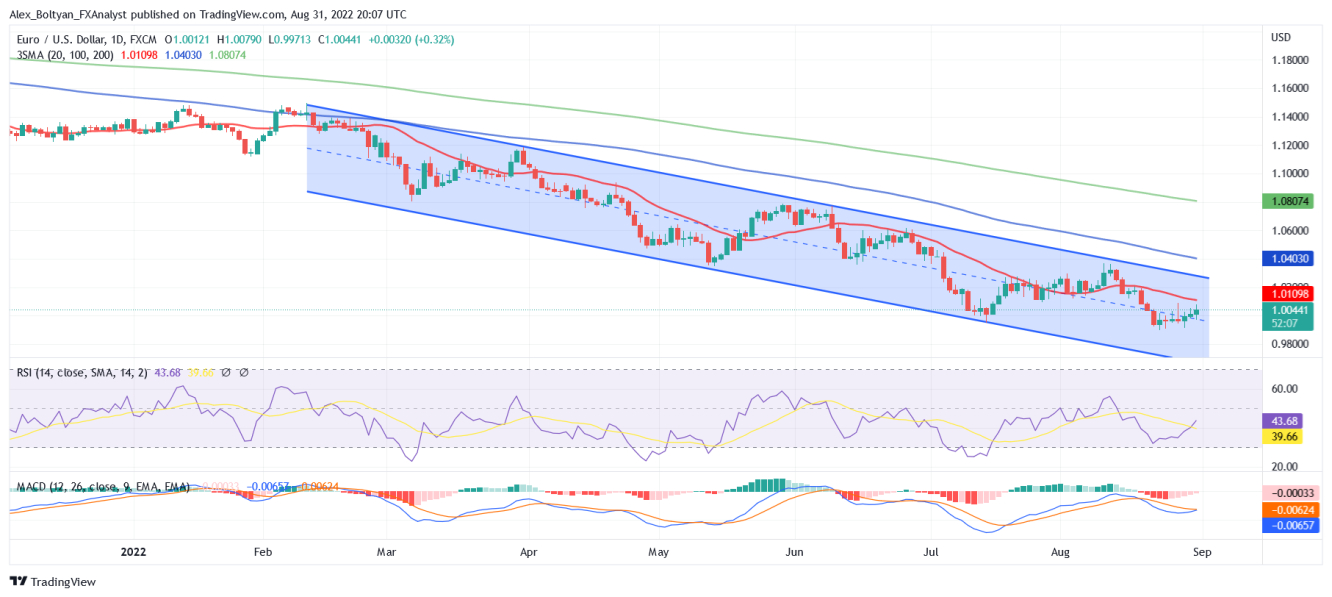The EUR/USD pair is advancing for the third day on Wednesday as the euro remains resilient despite broader U.S. dollar strength.
Higher-than-expected August EU inflation figures maintain alive expectations of a bolder move from the European Central Bank at its next meeting, underpinning the shared currency. Still, disappointing U.S. ADP data and cautiousness ahead of the official nonfarm payrolls report make it hard for the EUR/USD bulls to gather momentum.
At the time of writing, the EUR/USD pair is trading at the 1.0050 area, 0.36% above its opening price after volatile movements sent the pair a daily low of 0.9971 and a high of 1.0079.
ADP data showed that the U.S. private sector created 132,000 positions in August, the second straight monthly decline, down from 270,000 jobs in July. As the Fed delivers its contractive monetary policy and the US GDP figures point to a technical recession, Nela Richardson, Chief Economist from ADP, stated,
"Our data suggest a recent shift towards a more conservative hiring pace, possibly as companies try to decipher the economy's conflicting signals."
Across the pond, August Eurozone CPI data came in higher than expected. Headline inflation rose to 9.1% YoY versus 9.0% expected and up from 8.9% in July. The core inflation rose to 4.3% YoY, higher than the 4.1% of consensus and the 4.0% July rate.
Markets are betting on higher odds of 75%, a 75 bps hike for the ECB's meeting next week, and market participants are now pricing 250 bps of tightening over the next 12-month period, which would see the deposit rate peak near 2.5%.
In such cases, higher interest rates in the European Union may reduce the monetary policy divergence between the ECB and the Fed, helping the euro in the medium term. Still, with winter around the corner, the energy crisis might act in the opposite direction.
According to the daily charts, the EUR/USD pair holds a short-term negative bias, but technical indicators show easing bearish momentum. The RSI holds a positive slope below its midline, while the MACD prints lower red bars, indicating decreasing selling interest.
On the downside, the following support levels are seen at the 0.9955 level, followed by the cycle low of 0.9900 and then the 0.9700 area where the lower end of a descending channel from February highs stands.
On the other hand, short-term resistance could be found at the 1.0100-10 zone, where the psychological level is reinforced by the 20-day SMA, followed by the 1.0150 area and then the 1.0200 level.


